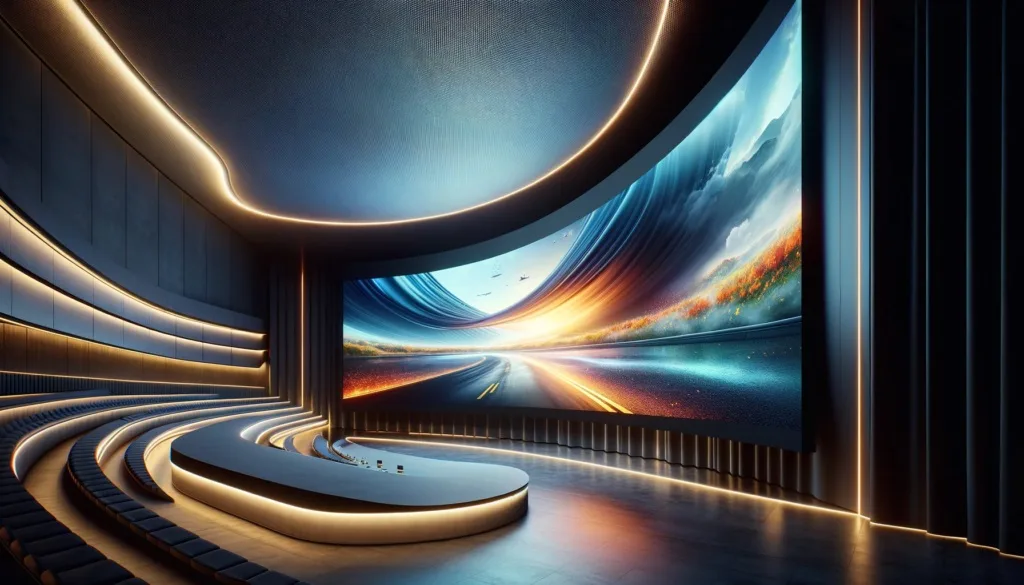Curved Displays Technology Review

Curved displays have been a fascinating innovation in the tech world, offering a new perspective on how we interact with screens. This review explores the origins, functioning, benefits, applications, and future prospects of curved display technology, aiming to provide a comprehensive understanding of its impact on various sectors.
What Kind of Technology and When Did It Appear
Curved display technology, a remarkable leap in screen design, first emerged in the early 2010s. Pioneered by major tech companies like Samsung and LG, this technology was initially showcased in high-end televisions and later expanded to monitors and smartphones. The concept of a curved display is to create a more immersive viewing experience by curving the edges of the screen towards the viewer. This curvature aligns with the natural curvature of the human eye, providing a more comfortable and engaging visual experience.
The introduction of curved displays was marked by the release of Samsung’s OLED TVs and LG’s curved monitors, which garnered significant attention at tech conventions such as CES (Consumer Electronics Show). By 2014, curved displays had firmly established themselves in the consumer electronics market, with various brands adopting the technology across different product lines. The main driver behind this innovation was the desire to enhance the depth and realism of the visual content, particularly in home entertainment and gaming sectors.
How It Works
Curved display technology works by utilizing flexible display materials, primarily OLED (Organic Light Emitting Diode) and, in some cases, advanced LCD (Liquid Crystal Display) panels. The flexible nature of OLEDs allows for bending and shaping without compromising the display quality. These panels are manufactured through a process that involves depositing organic compounds in thin layers, which emit light when an electric current passes through them. This technology not only enables the creation of curved shapes but also enhances the overall image quality with higher contrast ratios and deeper blacks.
The curvature of the display is designed to match the natural field of view of the human eye. Typically, these displays have a curvature radius measured in millimeters, such as 1800R or 1500R, indicating the degree of curvature. The closer the number is to 1000, the more pronounced the curve. The engineering behind these displays also includes advanced algorithms and pixel arrangements to ensure uniform brightness and color accuracy across the entire screen. This results in a seamless viewing experience without the distortion or color shifts that can occur with flat screens.
What Problem Does This Technology Solve
Curved displays address several key issues associated with traditional flat screens. One of the primary problems they solve is the limitation of the viewer’s field of view. Flat screens can cause visual fatigue and discomfort, especially during prolonged use, due to their inability to align with the natural curvature of the human eye. Curved displays, on the other hand, provide a more immersive experience by encompassing a wider field of view and reducing the need for constant head and eye movement.
Additionally, curved displays help minimize reflections and glare from ambient light sources. The curved surface directs ambient light away from the viewer’s eyes, enhancing the visibility of on-screen content and reducing eye strain. This is particularly beneficial in environments with multiple light sources or where direct lighting cannot be easily controlled.
Where This Technology Can Still Be Used
Curved display technology has found applications beyond the realm of consumer electronics. In the commercial sector, curved monitors are increasingly being used in financial trading, design studios, and control rooms. The expansive field of view and immersive nature of these displays make them ideal for environments that require multitasking and constant monitoring of multiple data streams.
Another area where curved displays are making an impact is in the automotive industry. Curved screens are being integrated into car dashboards and infotainment systems, offering drivers a more intuitive and engaging interface. These displays can wrap around the dashboard, providing easy access to controls and information without distracting the driver.
Furthermore, the medical field is exploring the use of curved monitors for diagnostic imaging and surgical procedures. The enhanced depth perception and clarity provided by curved displays can aid in the accurate interpretation of medical images and improve the precision of surgical operations.
Lastly, curved displays are becoming popular in public installations such as digital signage and interactive kiosks. Their unique design and ability to attract attention make them suitable for advertising and information dissemination in busy public spaces.

Future Prospects of Curved Display Technology
The future of curved display technology looks promising, with continuous advancements expected in both the materials used and the applications of the technology. Researchers are exploring more flexible and durable materials that could lead to even more pronounced curves and innovative form factors. This could potentially revolutionize how we interact with digital content, making curved displays a staple in various industries.
In addition to hardware advancements, software developments are also anticipated to enhance the functionality of curved displays. Improved user interfaces and interactive features will likely be tailored to take full advantage of the immersive capabilities of curved screens. This could lead to new ways of interacting with content, from immersive gaming experiences to more engaging educational tools.
Overall, as the technology matures and becomes more accessible, it is expected that curved displays will become more prevalent in everyday devices. From personal gadgets like smartphones and tablets to large-scale installations in public and professional settings, the curved display technology is poised to shape the future of digital interaction and visual media.


